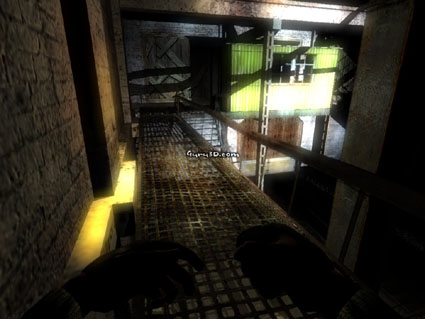Page 18 - The BONUS
When I was at NVIDIA in week 2 of 2003 I saw a GeForce FX optimized version of a game that is still in development. The game blew all of us away. Never have we seen such graphics and never have we seen such dynamics. The game is S.T.A.L.K.E.R.: Oblivion Lost and is currently developed by GSC Game Word. On the E3 on Los Angeles the developers where actually at the nVIDIA booth where I started talking with them. Please visit their site here BTW. The game is based upon the X-Ray engine which will run with any graphics card that is DirectX 8 or above.
Storyline April 12, 2006, 02:33 p.m.
Chernobyl zone was lit by an intolerably bright light. The clouds were evaporating in the silver bright sky with a thunder and earthquake to follow. People fell on the ground facedown closing their bleeding eyes and ears. The glow spread over an immense territory which was subsequently called the Zone. People ran away saving their lives. It looked like a radioactive explosion at the nuclear plant occurred. The army sealed off the Zone...The explosion epicenter was a kilometre away from the nuclear plant. Obviously, some tests had been held there and they caused the disaster. Presumably, the entire personnel died within seconds, but still there was a probability of survivals among the staff. It appeared impossible to arrange a rescue operation, as the Zone was characterized by strange energy disturbances posing mortal danger to the explorers. Attempts to use robots were unavailing. Several months after the accident the crisis situation peaked when the Zone abruptly grew five kilometres bigger. People from nearby towns and villages were urgently evacuated, and the peril of a difficult-to-imagine scope loomed over the world.
Year 2008
The Zone exploded, radioactive clouds covered vast territories. A dreadful amount of people, animals and forests perished. Thirty kilometres of the area got cordoned off by the army, scientists failed to explain what had happened. The Zone grew, various death-bearing anomalies were spotted inside. Some invisible force tore living beings apart, inflicted awful blood-sputtering wounds. Expeditions faced mutant animals, unlikely to have appeared in the Zone through natural course of evolution. The catastrophe, mutants, anomalies, contamination Everything appeared to be a consequence of some eerie phenomenonYear 2010
First expeditions can enter the Zone several kilometers deep without mortal danger . Amateur researchers, marauders and poachers, called stalkers, show up. They move around the Zone searching for various anomalous formations, i.e. artifacts, they would sell to various organizations.
I've been emailing forth and backwards to get some GeForce FX optimized screenshots for you guys to show you why the game stunned me as much as it did. GSC actually had to build a new system yesterday to make these screenshots.
I'm very excited to show you the first screenshots of S.T.A.L.K.E.R.: Oblivion Lost optimized for GeForce FX and taken with a GeForce FX 5900 Ultra. Let's have a look.
All images you see are copyrighted please do not use or deeplink them. The photo's have been shot at 1024x768. You may click on the images to see the image in that resolution.
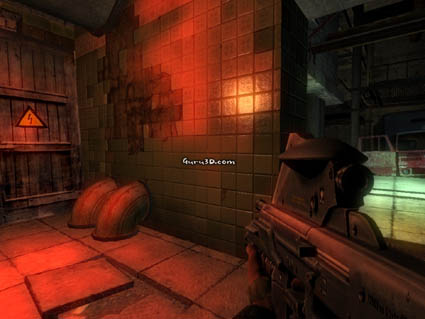
Take a good look at the shaders and lighting here ...
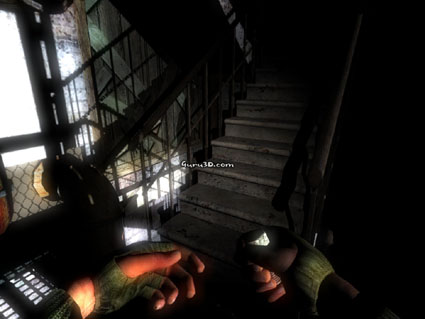
Take a look at the stairs, see how the shadows are mapped ?
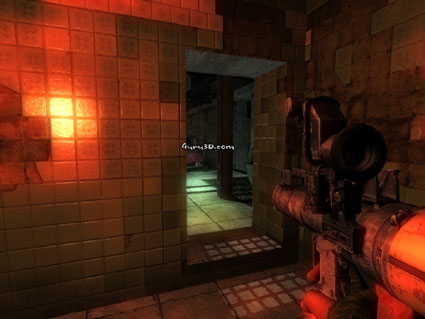
Again look at the lighting here .. soft reflections. Next generation lighting and shadowing from several light sources.
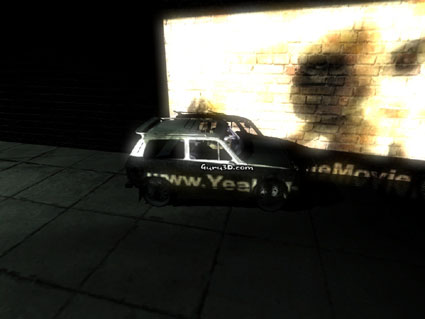
What you are looking at is a cinema, the projection at the read is actually visible on the car.
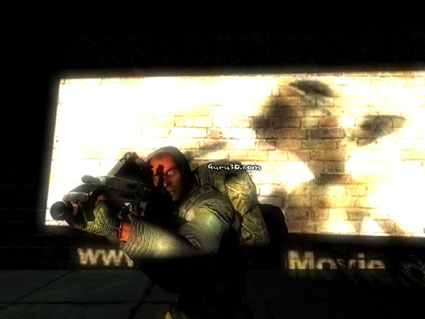
Same cinema projection but now also projected at the 3rd person figure. The amount of polygons used must be wicked.
X-Ray Engine render details:
Render:
- Support for all D3D compatible accelerators, starting from 2nd generation (TNT/Voodo2/etc), optimized for Geforce2 and up.
- Visualization optimized for hardware TnL (both FF and shading capable parts)
- Continuous level of detail technology for all the geometry
- ~300 000 polygons per frame at 60 fps on average hardware
- Detailed character models (500-10 000 polys)
- High-speed blended animation system capable of up tinfinity number of bone interpolation & modulation
- SSE/3Dnow! Technologies used for skinning and forward kinematics
- Visibility determination
- Portal-style, non-linear subdivision based visibility detection system
- Optimized for T&L hardware in the way of grouping primitives tlarge-size batches
- Dynamic occlusion culling, contribution culling
- Adaptive hardware state caching technology
- Lighting
- Colored dynamic lights and dynamic "soft" shadows
- Breakable light sources
- Animated lights
- Character shadowing
- Intelligent light sources selection, clipping, merging
- Detail mapping
- Water, flares, coronas, etc.
- Particle system with real physics
- Screen post-processing
- Shading
- Shader library is central tevery part of your rendering pipeline
- Completely abstracts the graphics API.
- Multi-pass Rendering
- Fallback Shaders
- Facilitates cross-platform development
- Separates shader writing from engine development
- Pixel and Vertex shaders automatically used on shading capable hardware
Alright, that was a little bonus and also the end of this review.
